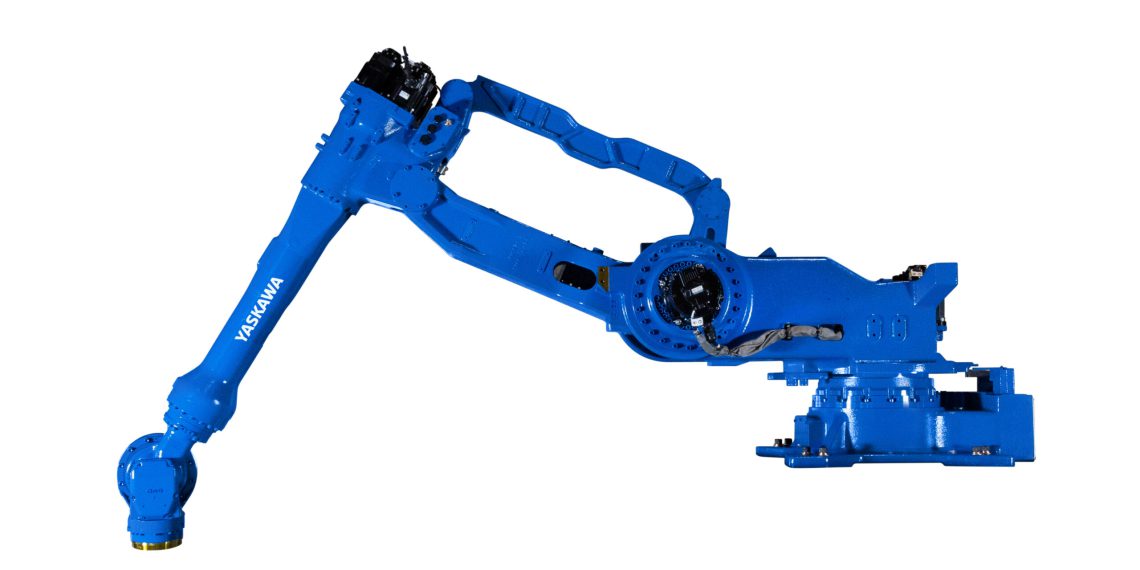Yaskawa underpins its claim to offer a full range of robot models for every application with the Motoman GP-Shelftype series. The range now includes five robot models with extended downward reach, e.g. for elevated placement on steel frames or brackets. This allows workpieces to be removed from above and creates floor space underneath the robot for fixtures, tool changes and part transfers.
In addition to the classic console robots Motoman GP165R and GP200R, which are often used in the automotive industry (body construction or press chains), the company offers special models with an exceptionally high maximum reach of 4 meters (GP120RL) or with particularly high payloads of up to 400 kg (GP300R, GP400R). Despite these impressive key figures, the robots impress with their slim design and low dead weight.
This robot series was developed for console mounting, which means that the manipulators can reach very far below themselves and work below their installation level. The already large action space of these Motoman robots can, of course, be extended enormously still further by means of travel paths or swings, for example for interlinked multi-machine loading systems over large areas. The valuable installation space below the robot remains free for large machines (e.g. CNC machining and cutting machines, injection molding machines), tools or conveyor systems that cannot be recessed into the floor.
Like all Yaskawa robots in the universal GP series, the robots in the Shelftype series are controlled by the compact MOTOMAN YRC1000 high-performance controller. This provides a variety of important functions for integration, communication or functional safety monitoring.
Another very interesting feature is the ability to program the robots directly and seamlessly via integrated PLC function blocks — in the familiar programming environment, eliminating the need for a robot programmer.
The first users are already using robots from the new Shelftype series. For example, the machine builder and process optimizer Heinrich Georg GmbH, headquartered in Kreuztal in the northern Siegerland region of Germany, is successfully using them in its production facilities to stack large sheet metal components for transformer core production.

















